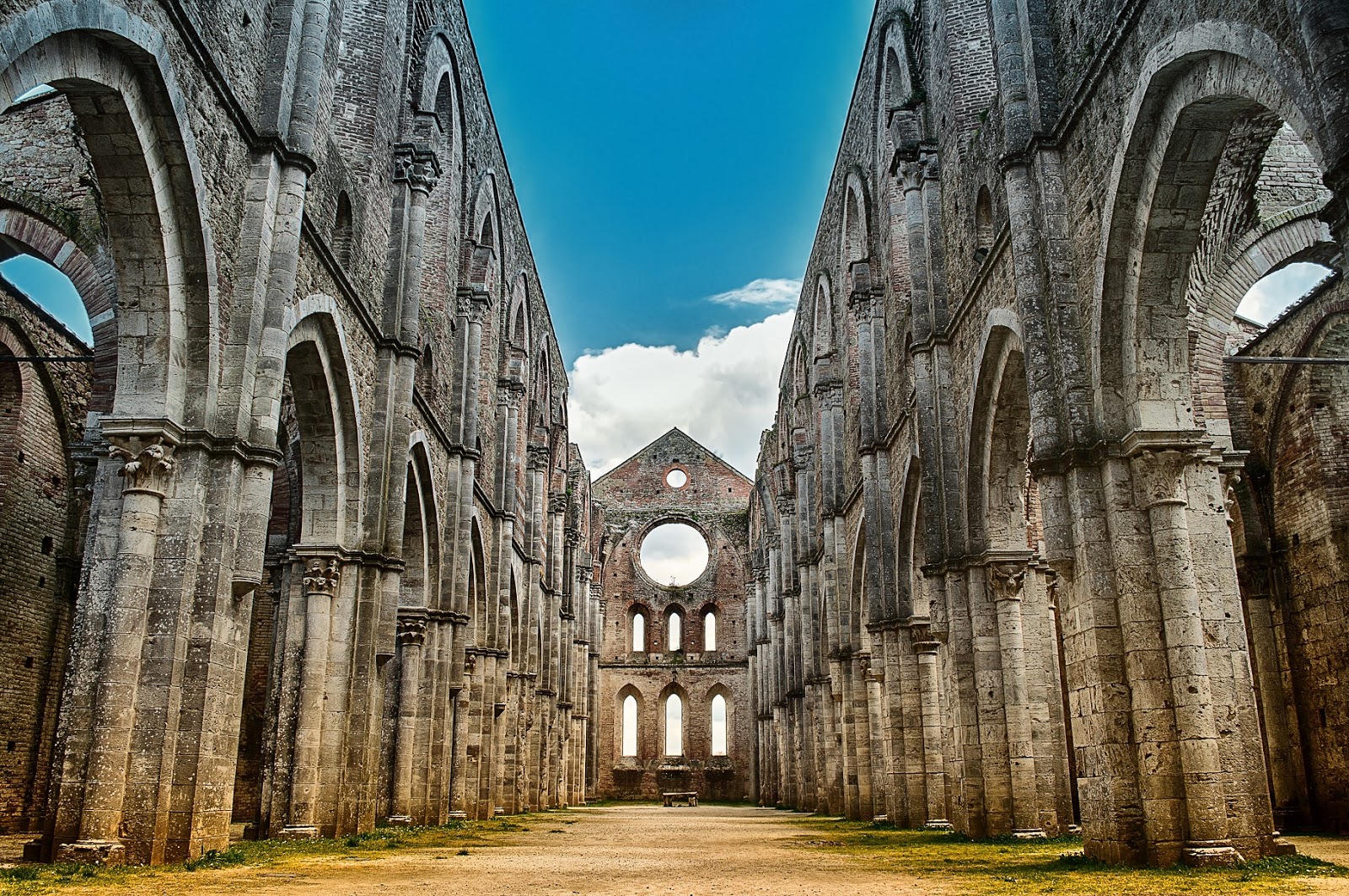Sword in the rock-the myth of Saint Galgano
Sword in the rock-the myth of Saint Galgano

What the British considered to be pure fiction—King Arthur and his mythical sword ripped from a rock to show his lawful title to the throne—was true to the Italians: in a Tuscan monastery in Montesipi, just the handle and a few inches of the blade were visible because the rock was so thick.
Exactly where the actual blade is hidden
Legend has it that Galgano Guidotti, a twelfth-century Tuscan lord who gave up violence and passion after having a vision in a cave, drove the sword into the rock where it now rests at the monastery of San Galgano in the town of Montesipi, 30 kilometres from Siena. Then he changed into a holy man, full of love and compassion.
The story of St. Galgano
Galgano was born in the little hamlet of Chiosdino in 1148, and despite becoming a knight and training in the art of fighting, he was reported to be haughty and always in quest of pleasure, until Archangel Michael appeared before him and taught him the route to redemption. After Galgano’s vision, his horse disobeyed his commands and took him back to the hill of Montespi, where he had seen the angel.
Then a voice on the phone told him to abandon all of his possessions, to which Galgano answered that it would be like attempting to crack a rock. As a lowly hermit, he seldom ventured off the hill, spending his days in austere solitude with the local wildlife and sometimes receiving visits from local peasants and monks. Another version of the legend has it that Galgano planned to build a crucifix on the hill but ran out of wood, so he planted his sword in the ground instead. The sword supposedly fused with the earth and became impossible to uproot.
Recently, a sword has been the subject of scientific inquiry

Ground-penetrating radar analysis also revealed that the area under the sword contains a cavity about two metres long and one metre wide, which is believed to be a burial place and possibly Contains the body of the knight. For centuries, it was thought that this sword was a fake, but after studying the composition of the metal, the researchers stated that the shape of the sword is consistent with the age of the legend.
Because the legend of St. Galgano is of the type that is easy to spread throughout Europe, and because the first story about Arthur and pulling the sword from the rock appeared in the decades that followed the mention of The story of Galgano in one of the poems written by the poet Robert de Boron, it has been speculated that the legend of St. Galgano served as a source of inspiration for the mediaeval legends of King Arthur and the sword within the rock.
